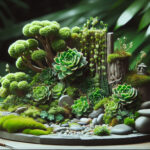Introduction to Crassula as a Succulent
Have you ever marveled at the compact beauty of a Crassula plant, sitting daintily in its pot? These charming plants are not just another pretty face in the world of houseplants; they’re a diverse and enchanting family of succulents that captivate gardeners and plant enthusiasts alike.

Crassula species are the epitome of what succulents stand for – resilience, ease of care, and architectural beauty. Each species showcases a unique silhouette that could easily pass off as a living sculpture. From the classic Jade Plant to the whimsical Crassula ‘Buddha’s Temple’, their plump leaves store water, giving them the stamina to withstand dry spells reminiscent of their native habitats in the rugged hills of South Africa.
This remarkable capacity for water storage makes the Crassula a true survivor, adapting to less than ideal environments and thriving with minimal fuss. Whether neatly placed on a sunny windowsill or adding a pop of green to a busy office, these succulents quietly declare their charm without demanding constant attention.
In the realm of succulent collections, Crassulas are a staple for good reason – they possess an allure that’s hard to replicate. Conjure the image of clusters of Crassula ovata ‘Gollum’ fingers reaching up like a chorus of green sea anemones, and you can begin to appreciate the special aesthetic they add to any space.
Understanding the allure of Crassulas comes not only from their immense variety and adaptability but also from their capacity to fit into our lives with an unparalleled ease. Whether you’re a seasoned collector or a newcomer charmed by their robust nature, there’s a Crassula out there waiting to be your next green companion.
Origins and Classification of Crassula Species
Step into the world of Crassula, a genus that has intrigued plant lovers and botanists alike with its extensive diversity and remarkable resilience. If you’ve ever stumbled upon a Crassula succulent, you’ve encountered a living testament to nature’s ingenuity. But where did these captivating succulents originate, and how did they earn their place in the expansive plant kingdom?
The tale of Crassula begins in the vast, arid regions of southern Africa, where the adaptability of these plants can be traced back to their natural habitat. Here, in the cradle of an unforgiving environment, the thick, fleshy leaves of Crassula species are not just a distinct characteristic but a survival strategy—a water reservoir to outlast droughts. With such an inbuilt resilience, it’s no wonder that these succulents have charmed their way into the hearts of gardeners and interior decorators around the globe.
Diving deeper into their lineage, we find that Crassulas settle comfortably within the Crassulaceae family. They flaunt a vast array of species, each classified based on leaf formation, blossoming patterns, and other distinctive traits which make them a study of endless fascination. For anyone looking to embrace the botanical world, understanding the classification of these plants is akin to discovering a secret garden of stoic natural wonder.
As you delve into the classification history of Crassula species, it becomes clear that these are not just plants; they are storied champions of adaptation and survival. From rocky outcrops to cliff faces, their presence marks a successful sojourn through evolutionary challenges. And in our modern homes, they become silent reminders of the tenacious life pulsing beyond our windowpanes.
But how does this impact you, the plant enthusiast or casual gardener? Knowledge of Crassula’s origins enhances the appreciation of these succulents and guides one in providing a bit of their ancestral home, right in our living spaces. For instance, finding the perfect potting mix or the ideal lighting setup can turn anyone into a Crassula aficionado, capable of nurturing these robust succulents with the reverence they deserve.
Don’t just take our word for it, though. Dive into the enchanting world of Crassula species by watching this enlightening video:
And for those eager to extend their green thumb to other succulent species, be sure to explore our guide on Senecio Succulent Secrets, where thriving tips and care insights await your curious mind. As you cultivate your garden, let the stories of these remarkable species remind you that even in the harshest conditions, life finds a way to flourish—beautifully so.
Popular Crassula Varieties for Plant Enthusiasts
Are you intrigued by the sheer variety of succulents gracing the windowsills of plant aficionados across the globe? Among them, the Crassula genus commands a special place with its diverse range of eye-catching varieties. Let’s take a closer look at some of the Crassula species that are transforming the humble houseplant into a botanical statement.
First up is the legendary Jade Plant (Crassula ovata), a classic symbol of good luck. Its plump, shiny green leaves and robust, tree-like structure make it not just a plant, but a miniature sculpture enriching your living space. Whether you’re nurturing a single petite pot or a forest of these green gems, they’re bound to spark joy with their simple yet striking beauty.

In contrast to the stately Jade Plant is the dainty Crassula arborescens, also known as the Silver Dollar Plant. Its silvery-blue leaves brushed with a soft pink hue at the edges can make you think of a dusky sky at twilight. This plant is perfect for those who adore a hint of color amidst the greenery in their urban gardens.
For lovers of quirky shapes, the Crassula perforata, or String of Buttons, brings an artistic twist to the succulent collection. Its leaves spiraling around the stem resemble a living piece of modern art, always growing and changing its form. Its stacked, triangular leaves create an eye-catching geometric pattern that’s sure to captivate and delight any observer.
Crassula comes in many other fascinating varieties, each with its unique allure. From the ripple-leaved Crassula ‘Gollum’ that ignites the imagination to the delicate flowers of Crassula ‘Buddha’s Temple’, there’s a Crassula out there to enchant every plant lover. Why not discover your own Crassula favorite and let its charm unfold in your personal green space?
Caring for Crassula: Tips and Best Practices
Picture yourself nurturing a Crassula plant, sometimes known as the ‘Jade Plant’, witnessing it thrive under your care. These succulent beauties beg for a bit of attention and understanding to show off their luscious, jade-green leaves. Let’s embark on a journey together to master the delicate art of Crassula care!
Watering: When Thirsty, Not When Convenient
Crassulas hold a reservoir of moisture in their plump leaves, demanding water only when the soil feels dry to the touch. These are not your average thirsty plants that need constant sips of water. Imagine you’re a detective figuring out when a crime is about to happen—but in this case, the ‘crime’ is overwatering, and you’re preventing it by feeling the soil!
Here’s a succulent care guide for those seeking more in-depth knowledge on quenching your succulents’ thirst just right.
Lighting Up Crassula’s World
Crassulas adore the sun like beachgoers on a hot summer day. Relish in finding them the brightest spot in your home, possibly a south-facing window where sunlight cascades in and bathes your Crassula in golden warmth. A well-lit Crassula is a happy Crassula, photosynthesizing joyously as it basks in the sun’s embrace.
The Ideal Temperature for Your Green Companion
Lucky for you, Crassulas aren’t too picky about the thermostat. They enjoy a cozy range between 60-85°F (15-29°C), typical room conditions. However, they do ask you to shield them from drafts and extreme temperatures that could cause their leaves to sulk and droop. Think of them as houseguests with a reasonable request for comfort—nothing more, nothing less.
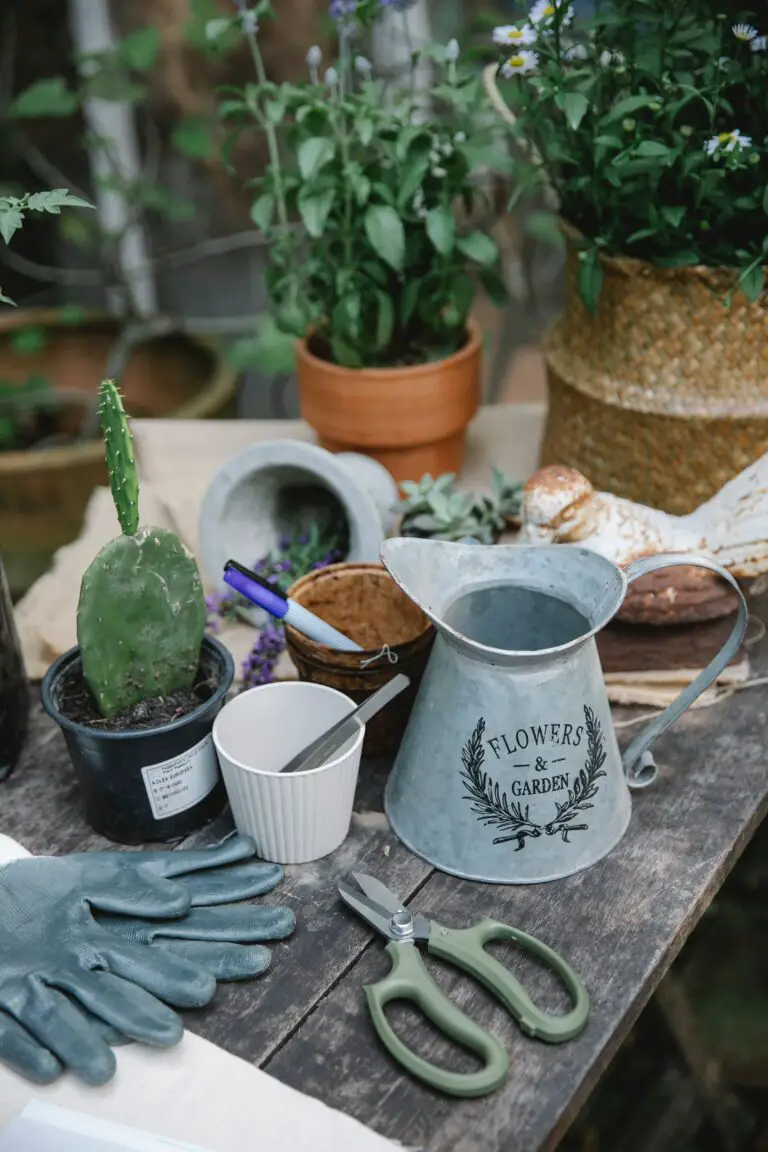
Under the caring watch of a gardener, who knows the secrets of propagating Crassula, these plants can transform into striking embodiments of resilience and grace. The gardener’s gentle yet firm approach, giving just enough water, the right amount of light, and maintaining the perfect temperature, becomes a symphony that nurtures growth and vitality.
Now, fostering the charm of Crassula isn’t just about meeting its basic needs, but about embracing a companionship with nature. Tending to a Crassula is about the harmony you create between the plant’s desires and your capacity to understand them. With this guidance, your succulent companion will not only survive but thrive under your guardianship, becoming a lively testament to the care you’ve invested.
Propagating Your Crassula
There’s nothing quite like the joy of watching a new life grow from a mere fragment of a plant, and Crassulas are perfect candidates for this kind of garden magic. The process of propagation isn’t merely a technique; it’s an art form that can be both gratifying and foolproof if you follow some practical steps. Let’s delve into the world of Crassula propagation and uncover the simple yet effective ways to expand your succulent collection.
Begin with Leaf Cuttings
Imagine taking a single leaf from your Crassula and seeing it sprout roots and shoots, turning into a full-grown plant. It’s not a fantasy—it’s the reality of leaf cuttings, one of the most user-friendly propagation methods. Here’s what you need to do:
First, choose a healthy, mature leaf and gently twist it off the plant, ensuring the base is intact. Lay the leaf flat on dry succulent soil and give it time. The key is patience as it can take weeks for new roots to appear. When they do, lightly water the soil and let the new plantlet draw strength from the mother leaf before it’s ready to stand on its own.
Offset the Odds with Offsets
If your Crassula is generously producing tiny replicas of itself, known as offsets, you’re in luck. These little clones are itching to grow independently. To successfully “offset” them, sever the connection with a sterilized knife or scissors and let the cut end dry out for a day or two to form a callous. Then, plant them in well-draining soil, and you’ve got a self-sufficient succulent with the same robust genes as its parent.
Sowing the Seeds of Success
Starting Crassulas from seeds is a practice in zen-like patience, but with a sprinkle of know-how, it can be incredibly rewarding. Be mindful to spread the seeds evenly on top of moist succulent or cactus mix soil. With a transparent cover to maintain humidity and consistent, but not direct, light, the delicate seeds will eventually germinate, ushering in a new generation of succulents.
As with all gardening endeavors, cultivating Crassulas is not without its challenges, but here’s a trick—you can create a micro-environment to enhance growing conditions. By simply using a clear plastic cup over your cuttings or seeds, you simulate a miniature greenhouse that optimizes humidity and temperature, stealthily nudging your propagation efforts towards surefire success.
To illustrate just how accessible Crassula propagation can be, let’s consider a real-life example. Envision a humble Crassula leaf fallen from its parent, lying on the soil. Neglected, it might seem destined to wither. But given time, the miracle of propagation occurs. Roots tentatively reach out, and a young shoot emerges, unfolding new leaves that bask in the sun’s embrace—a testament to the resilience and adaptability of the Crassula genus.
As you embark on your propagation journey, remember that every leaf, offset, or seed holds the promise of a new Crassula, waiting to adorn your space with its unique charm. Now, equipped with the right knowledge and a touch of tender care, you’re ready to multiply the beauty of these enchanting succulents.

Crassula’s Role in Indoor and Outdoor Gardening
Imagine walking into a living space where the air feels fresher, the ambiance is calmer, and the decor naturally blends functionality and aesthetics. That’s the beauty Crassula plants bring to indoor environments. Known for their ease of care and ability to thrive in a variety of settings, they are the unsung heroes of interior design. But Crassula’s charm doesn’t stop at the doorstep; these resilient succulents can transform outdoor spaces into textured, colorful landscapes that are a feast for the eyes and a haven for the soul.
In the cozy corners of urban apartments, Crassula plants become the centerpieces of tranquility. A small oasis on a window sill or a living sculpture on a coffee table—these succulents adapt to container living with remarkable grace. It’s not uncommon to see Crassula varieties like ‘Jade’ or ‘Hobbit’ sitting proudly in minimalist pots, complementing the clean lines of modern interior decor while purifying the air and brightening the mood.
Outdoors, Crassula plants are just as versatile. Imagine a rock garden: sun-drenched and brimming with life, where each Crassula, with its unique form and texture, adds a new dimension to the landscape. These succulents play well with other xerophytic companions, making them the perfect candidates for drought-tolerant gardening—a practical and beautiful solution to water conservation efforts.
But why limit them to the ground? Vertical gardening has opened new horizons for Crassula enthusiasts. Green walls flocked with these succulents can transform bland exteriors into vibrant, living tapestries. Whether it’s adding a touch of green to a stark office facade or creating a natural privacy screen in a residential balcony, Crassula species can rise to the occasion—quite literally!
Certainly, it is this adaptability that makes Crassula a prime choice for gardeners and decorators alike. In both indoor and outdoor settings, these succulents can thrive with minimal water and attention, making them accessible to green thumbs of all levels. Engaging in gardening with Crassula isn’t just a hobby; it’s an exercise in artistic expression, a testament to the symbiosis between humans and nature.
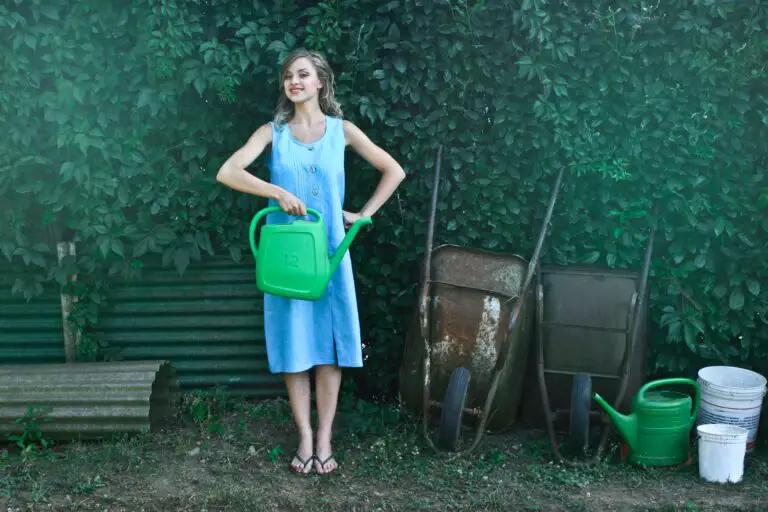
Seamless Integration in Various Gardening Setups
Seamlessly integrating Crassula into various gardening setups isn’t a daunting task; it’s an exciting journey of discovery. From the novice indoor plant lover experimenting with their first potted Crassula ovata, to the seasoned horticulturist curating an extensive outdoor succulent collection, these plants offer a rewarding experience. Whether they stand alone or accompany other foliage, Crassulas command attention with their structural beauty and undeniable charm, making them a choice succulent for any plant enthusiast.
Common Issues and Solutions for Crassula Plants
So you’ve decided to adorn your space with the ever-so-lovely Crassula, the charmer among succulents. But even the sturdiest plants have their off days. Whether you’re a green thumb guru or a budding plant enthusiast, here’s the lowdown on keeping your Crassula robust. Buckle up, as we dive into a world where pests, diseases, and environmental no-nos meet their match.
Uninvited Guests: Pests
Imagine this: one day, your Crassula is thriving, and the next, it’s a feast for mealybugs or spider mites. These uninvited guests can throw a fiesta at the expense of your plant’s health. But fear not! Combat these pests by introducing their natural enemies, like ladybugs, or by wiping down your Crassula with a soft cloth dipped in soapy water. Keep your eyes peeled for signs of trouble, and act swiftly to send those pests packing.
Warding Off Diseases
It’s not just creepy crawlies that can wreak havoc; fungal foes like powdery mildew also lurk. These microscopic menaces love a damp environment. The solution? Water your Crassula at the base, keeping the leaves as dry as a sunny day in the Sahara. If you spot any signs of disease, remove the affected area with the precision of a skilled surgeon and treat your plant with a fungicide fit for a king or queen.
Environmental Stress: A Balancing Act
Even the hardiest Crassula can experience a bad hair day when environmental conditions go awry. Too much sun can cause sunburn (yes, plants get it too!), while too little leaves them stretching out like a lazy cat in the sunlight. Aim for a Goldilocks spot – not too much or too little light. The same goes for watering; it’s all about balance. Overwatering can lead to root rot, the bogeyman of succulent growers, while underwatering turns your plant into a shriveled shadow of its former self. So, water deeply but infrequently, and your Crassula will be more resilient than a superhero.
Now you’re armed with the know-how to tackle the most common Crassula calamities. Remember, prevention is better than cure, so keep a watchful eye and create the ideal environment for your plants to thrive.

Designing with Crassula: Aesthetic and Symbolic Uses
The Crassula, a succulent that’s as versatile as it is alluring, offers an oasis of texture and vibrancy that could transform any corner into an exhibit of Mother Nature’s artistry. This hardy plant is not just about surviving on your windowsill with the minimum fuss; it’s a statement piece, a whisper of the wild that elevates your living space with its undemanding elegance.
Imagine the leaves of a Crassula, plump and jade-colored, sitting like little gemstones atop sturdy branches. They can be a focal point on a minimalist desk, a refreshing green against the starkness of modern decor. 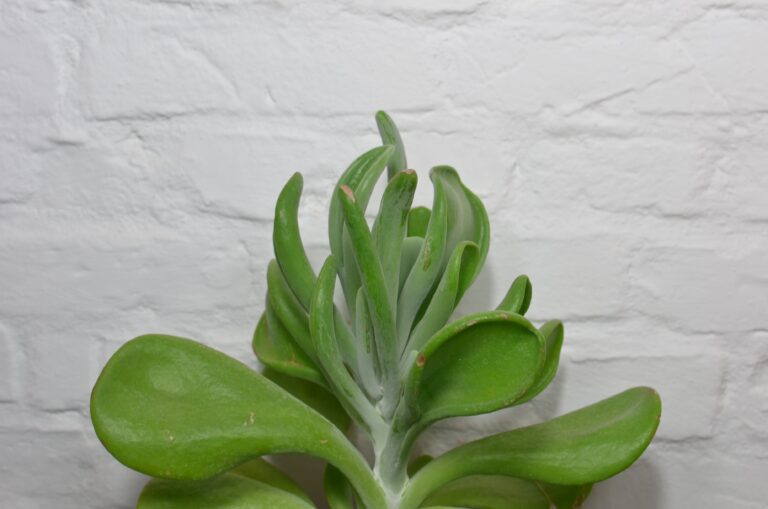
But Crassula carries more than just aesthetic weight; it bears a bouquet of meanings. In some cultures, these succulents are considered symbols of prosperity and luck, making them a meaningful gift to give and receive. Imagine gifting a Crassula as a housewarming present, not just offering a decorative item but also imparting a wish for abundance.
In Feng Shui, the practice of harmonizing individuals with their surrounding environment, Crassula is often placed in money areas of the home, with the belief that it will boost the energy of wealth. Who wouldn’t want a natural ally in the pursuit of financial prosperity? This isn’t just about following a tradition; it’s about inviting a sense of optimism into your life, with a green companion that’s believed to root for you.
Strategically incorporating Crassula into public spaces can have a profound effect as well. Imagine walking into a spa where the air smells of essential oils, and your eyes meet a serene setting of Crassulas, enhancing the ambiance of calm and tranquility—a sublime silent promise of rejuvenation. They’re not merely plants; they’re part of the experience, the natural decorators that communicate a message of peace and recuperation.
Whether it’s the soothing aspect of their lush foliage or the folklore that surrounds them, Crassulas are more than just a passing element in design. They have the power to transcend their pot, contributing to an environment’s narrative, be it a home, office, or a space meant for healing. With the right touch of creative placement, these succulents can be the unsung heroes of interior design, adding life, color, and a whisper of symbolism in every leaf.
Frequently Asked Questions
Are you contemplating whether the Crassula you’ve been eyeing is indeed the succulent soulmate for your window sill? Let’s dive into the nitty-gritty of what makes these plants tick, and how you can keep your green buddy happy and thriving!
Is Crassula Really a Succulent?
Totally! Crassula belongs to the succulent family, which means it’s a champ at storing water in its thick, fleshy leaves—pretty handy for surviving dry spells. So if you’re someone who forgets to water the plants now and then, Crassula’s got your back.
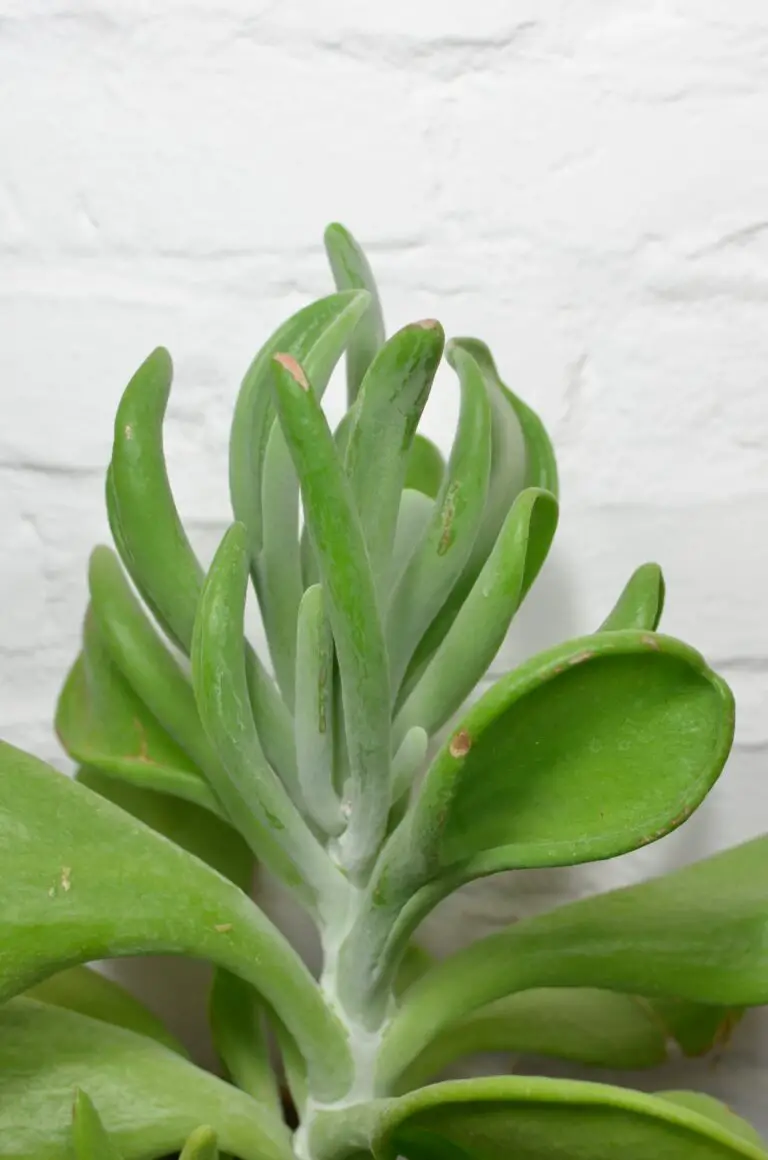
How Do I Make Sure My Crassula Stays as Charming as the Day We Met?
First off, think about where you’re putting it. These plants love the spotlight—but not too harsh, please. Bright, indirect sunlight is their jam. And when it comes to watering, less is more. Wait until the soil is dry before giving it a drink. Overwatering is like overbearing in-laws for Crassula—unwanted and stressful!
Wait, Can I Make More Crassulas from One?
Yes, you can! Propagation is like plant parenthood, and it’s super easy with Crassulas. Snip off a leaf, let it callous over for a day or two, and then pop it on some well-draining soil. Give it some time, and voilà, you’ll have baby Crassulas sprouting up!
What If My Crassula Starts Looking a Bit Under the Weather?
Crassulas are pretty resilient, but they can have their off days. If the leaves are dropping or getting mushy, that’s a cry for help—probably from overwatering. Ease off on the H2O and ensure good drainage. Remember, it’s better to underwater than overwater. And keep an eye out for pests. A little neem oil goes a long way in keeping the critters at bay.
In a nutshell, Crassula is indeed a succulent that’s as easy-going as it is enchanting. Treat it right, and it’ll be the leafy companion that not only enhances your space but also forgives the occasional neglect. Whether you’re a seasoned gardener or a novice, Crassula is a breeze to care for, making it an alluring addition to any plant collection.
